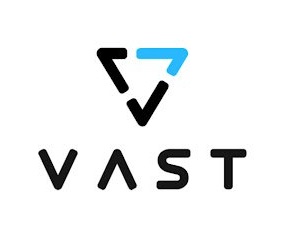NEW YORK, Sept. 15, 2020 — VAST Data, the storage company breaking decades-old tradeoffs, today announced the availability of its next generation storage architecture designed to eliminate the compromises of storage scale, performance and efficiency to help organizations harness the power of AI as they evolve their data agenda in the age of machine intelligence. Dubbed LightSpeed, this new concept combines the light-touch of VAST’s simple NAS appliance experience with leadership-class performance for NVIDIA GPU-based and AI processor-based computing, taking the guesswork and configuration out of scaling up AI infrastructure.
 LightSpeed is both a product and a concept, designed to address all facets of storage deployment that system architects face when designing next-generation AI infrastructure, that includes:
LightSpeed is both a product and a concept, designed to address all facets of storage deployment that system architects face when designing next-generation AI infrastructure, that includes:
- Flash at HDD Economics to Eliminate Tiering: VAST’s Disaggregated, Shared Everything (DASE) storage architecture was invented to break down the barriers to performance, capacity and scale – where revolutionary flash economics make it finally possible to afford flash for all of a customer’s training data. By eliminating storage tiering, the exabyte-scale DASE cluster architecture ensures that every I/O request is serviced in real-time, thereby eliminating the storage bottleneck for training processors.
- 2X Faster AI Storage HW Platform: VAST’s new LightSpeed NVMe storage enclosure delivers 2X the AI throughput compared to previous generations of VAST hardware. This makes the system ideal for read-heavy I/O workloads like those found within modern deep learning frameworks, such as computer vision (PyTorch, TensorFlow, etc.), Natural Language Processing (BERT), Big Data (Apache Spark), Genomics (NVIDIA Clara™ Parabricks) and more. LightSpeed enclosures help customers increase their computing power with less hardware.
- NFS Support for NVIDIA GPUDirect Storage: VAST supports best-in-class performance with NVIDIA GPUDirect Storage technology, currently in beta. GPUDirect enables customers running NVIDIA GPUs to accelerate access to data and avoid extra data copies between storage and the GPU by avoiding the CPU and CPU memory altogether. In initial testing, VAST demonstrated over 90GB/s of peak read throughput via a single NVIDIA DGX-2 client, nearly 3X the performance of VAST’s NFS-over-RDMA and nearly 50X the performance of standard TCP-based NFS. By eliminating all bottlenecks, VAST and NVIDIA have paved the way for GPU-efficient computing using the industry standard NFS file system.
In addition, the company also announced LightSpeed cluster configurations that make it simple for customers and partners to balance their GPU cluster scale with capacity and performance-rich storage:
- The Line: 2 x LightSpeed Nodes pair 80GB/s of storage bandwidth for up to 32 GPUs
- The Pentagon: 5 x LightSpeed Nodes pair 200GB/s of storage bandwidth for up to 80 GPUs
- The Decagon: 10 x LightSpeed Nodes pair 400GB/s of storage bandwidth for up to 160 GPUs
“Today, VAST is throwing down the gauntlet to declare that customers no longer need to choose between simplicity, speed and cost when shaping their AI infrastructure strategy,” said Jeff Denworth, Co-founder and CMO at VAST Data. “Let the data scientists dance with their data by always feeding their AI systems with training and inference data in real-time. The LightSpeed concept is simple: no HPC storage muss, no budgetary fuss, and performance that is only limited by your ambition.”
“At AI scale, efficiency is essential to application performance, which is why it’s critical to avoid any unnecessary data copies between compute and storage systems,” said Charlie Boyle, vice president and general manager of DGX Systems at NVIDIA. “VAST Data’s integration of GPUDirect Storage in the new LightSpeed platform delivers a distributed NFS storage appliance that supports the intense demands of AI workloads.”
Customer Adoption
On the heels of its growing collaboration with NVIDIA, VAST is being selected by a variety of industry-leading customers who are adopting AI to modernize their application environment, including new LightSpeed customer wins at the Athinoula A. Martinos Center for Biomedical Imaging and with the US Department of Energy. With VAST’s groundbreaking flash economics, the Martinos Center has started a strategic shift to all-flash Universal Storage to help accelerate image analysis across massive troves of MRI and PET scan data, while simultaneously eliminating the uptime challenges previously faced with hard-drive based storage systems.
“VAST delivered an all-flash solution at a cost that not only allowed us to upgrade to all-flash and eliminate our storage tiers, but also saved us enough to pay for more GPUs to accelerate our research. This combination has enabled us to explore new deep-learning techniques that have unlocked invaluable insights in image reconstruction, image analysis, and image parcellation both today and for years to come,” said Bruce Rosen, Martinos Center Executive Director
About VAST Data
Headquartered in New York City, VAST Data is a storage company bringing an end to complex storage tiering and HDD usage in the enterprise. VAST consolidates applications onto a highly scalable all-flash storage system to meet the performance needs of the most demanding workloads, while also redefining the economics of flash infrastructure to finally make it affordable enough to store all of your data on flash. Since its launch in February 2019, VAST has established itself as the fastest selling storage startup in history. VAST’s Universal Storage now powers several of the world’s leading data centric computing centers.
Source: VAST Data



























































